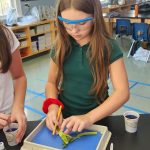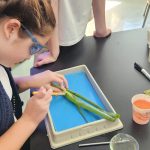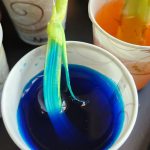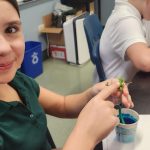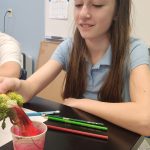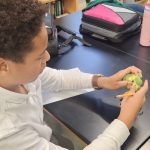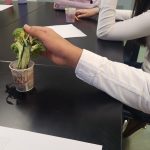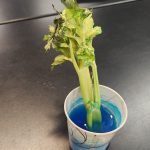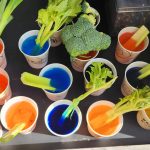Observing Transport through a Plant Body
Posted by Joshua Bartosiewicz- Cutting celery down to size.
- Splitting celery in half.
- The water was died blue so we can watch the water molecules become absorbed and transported through the celery plant body.
- “Mr. B, look! The dye went all the way to the top of the celery leaf!”
- Observing the pink water that has been absorbed and transported through broccoli.
- Observing the purple water transporting up the broccoli stalk.
- Looking at the water transport in broccoli.
- Broccoli turning pink!
Leading up to this lab, our 7th graders have been learning about plant bodies, from their structures and systems to how they function and operate. As a class they have discovered there are two main systems for a plant body, this includes the shoot system (stems, branches, leafs, flowers) and the root system (the roots below the surface of the ground). These systems contain 3 types of tissues referred to as vascular tissue (helps transport nutrients and water), ground tissue (helps support the plant) and dermal tissue (helps to give structure and protection to the plant). Within the vascular tissue there are two types of conduits for transporting either water, known as the xylem or sugars and nutrients which is called the phloem. In this lab, students had a cup of water which they used food coloring to dye the water a color of their choice. Next, each student chose either a celery stalk or broccoli head to partially submerge into the cup of dyed water. These experiments were placed in the back of the room for 2 days. Since the water was dyed a certain color, we were able to observe the actual transportation of water through the xylem. This resulted in the actual vegetable (either the celery or broccoli) being died the same color as the water it was sitting in. In the end, the 7th graders truly enjoyed watching this phenomenon take place in the back of our lab.
← Unquowa Election Day - "Green Menu" or the "White Menu"? 8th Grade Speaker Series Begins →













